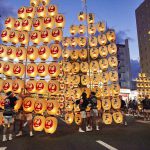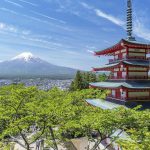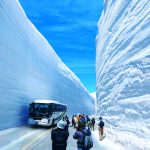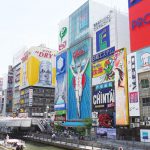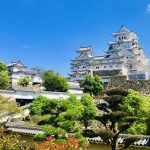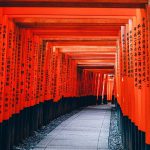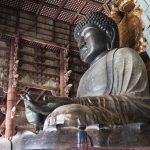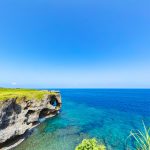Hokkaido
Hokkaido is the second largest island in Japan after Honshu, and is connected to Honshu by rail via the Seikan Tunnel. It is located at the northern part of Japan and at the same latitude as cities such as Rome, Marseille, Barcelona and Chicago.
The climate of Hokkaido is subarctic, with low humidity and temperatures throughout the year. There are few days when the temperature exceeds 30 °C (86 °F), and the minimum temperature in midwinter is around – 20 °C (- 4 °F). It is not affected much by the rainy season and typhoons, and is visited by many tourists in the summer (June-September) and winter (December-March).
Hokkaido is known for its magnificent nature, such as mountainous areas, beautiful lakes, rivers, and marshes. There are also numerous destinations with hot springs and popular sightseeing cities, such as Sapporo that hosts the annual Snow Festival, and Hakodate. Since Hokkaido is a large and expansive region, sufficient time to travel is highly recommended.
Do-to (Eastern Hokkaido)
Shiretoko is one of only four world natural heritage sites in Japan. It has many hot springs created by the volcanoes that run through the central part of the peninsula, and a range of cliffs and waterfalls facing the Sea of Okhotsk on the west side. Virgin forests cover the peninsula. You can enjoy hiking and cruises in the summer, and drift ice observation cruises in the winter. It is one of the world’s leading habitats for brown bears, as well as a variety of wild animals, such as the Ezo red fox, red-crowned cranes, which are special natural monuments, sika deer, killer whales, and sperm whales.
The Kushiro Wetland is the largest moor in Japan registered under the Ramsar Convention. It is a treasure trove of wild birds, such as the red-crowned crane, Steller’s sea eagle, white-tailed eagle, and gray heron. You can enjoy Kushiro Marsh by canoeing down the river, visiting the Kushiro Marsh Observatory promenade and Kottaro Swamp Observatory, and taking the “Kushiro Marsh Norokko” sightseeing train, where you may enjoy a leisurely view of the marsh. The season is from late April to September, and the appearance of Japanese cranes is from January to March.
Lake Mashu, one of the most transparent lakes in the world, is a beautiful cobalt blue caldera lake with a mysterious atmosphere that is often surrounded by fog. In the vicinity, there are Lake Kussharo, which is one of the largest caldera lakes in the world, Lake Akan, unexplored Lake Onneto, and many hot springs, such as Kawayu Onsen.
Do-hoku (Northern Hokkaido)
Mt. Rishiri, which is 1,721 m above sea level, rises beautifully on Rishiri Island. The conical shape is reminiscent of Mt. Fuji and is also called “Rishirifuji.” It is the majestic wonder of this island. Rebun Island consists of cliffs and gentle hills, and you can see Mt. Rishiri from afar at Momoiwa Observatory, famous for alpine plants along the southern end of the island. You can also enjoy hiking and fresh seafood.
Daisetsuzan is a general term for about 20 volcanic groups such as Mt. Tokachi and Mt. Tomuraushi, including Mt. Asahidake, the highest peak in Hokkaido, which rises almost in the center of the island. There is an aerial tramway to the foot of Mt. Asahidake, where you can see alpine plants blanketing the landscape during the summer mountain climbing season.
Furano is known for its endless straight roads and beautiful lavender fields overlooking Mt. Tokachi, and the scenery of Farm Tomita is especially spectacular. The best time to enjoy the scenery is from late June to early August. Biei, a hill town adjacent to Furano, has many kinds of flower fields such as tulips, lavender and marigolds. You can enjoy them from April to October, but the best season is from July to September.
Do-ou (Central Hokkaido)
Sapporo, the largest city in Hokkaido and the starting point for your trip, offers gourmet food such as fresh seafood, ramen, potatoes, and melons. Shiroi Koibito is a popular souvenir shopping destination, and the Sapporo Beer Museum is irresistible for beer lovers. The Sapporo Snow Festival, a snow and ice festival held every February at Odori Park, is a must-visit event in winter. You will be impressed by the artistry and size of the snow and ice sculptures.
Otaru, a little over 30 minutes by rail from Sapporo, has prospered in fishing and trade since the Edo period, and has a retro atmosphere with old buildings, warehouses, and canals. It is also a port town that is famous for sushi and seafood, and many well-established shops can be found there.
Do-nan (Southern Hokkaido)
Niseko is one of Japan’s leading resorts; a two-hour drive from Sapporo. Renown for rafting and hiking in the summer, and powder snow in the winter, it is extremely popular with skiers and snowboarders in the Southern Hemisphere, such as Australia. There are plenty of hotels, restaurants and hot springs, and many travelers often stay for an extended time.
Noboribetsu Onsen is a historical hot springs resort that serves as a representation of Hokkaido. It is famous nationwide for its nine different types of hot springs water.
Lake Toya is the third largest caldera lake in Japan where the Group of Eight, an inter-governmental political forum, was held in 2008. You can enjoy beautiful scenery, hot springs, seafood and other gourmet food, as well as Mt. Usu nearby, which is known for its panoramic views of Lake Toya, Mt. Yotei, and Funka Bay.
Located at the southern tip of Hokkaido, Hakodate is lined with buildings such as Goryokaku, the oldest Western-style castle, and Haristos Church, the oldest Greek Orthodox Church in Japan. There are also the Kanemori Red Brick Warehouses for tourists, and the popular morning market, well known for seafood such as freshly caught squid, crab, and sea urchin. The night view from Mt. Hakodate, one of the world’s three major night views, is a must-see.


